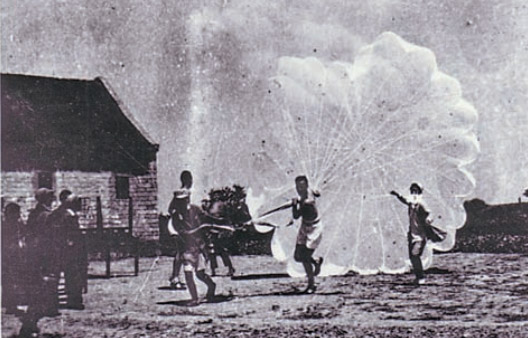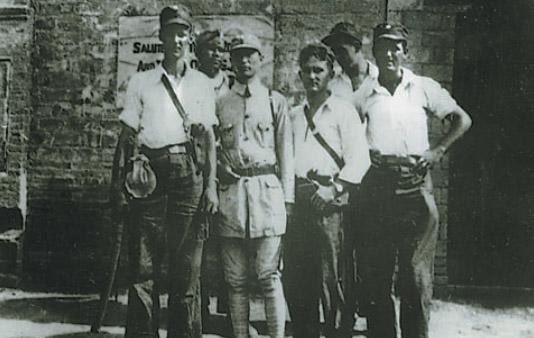 |
|
Chinese soldiers assist American pilots with their parachutes after they bailed out of their plane and touched down near Hongze Lake, in Jiangxi province, in August 1944. [Provided to China Daily] |
Vice-Premier among the many who connect with the US pilots who helped China's wartime resistance, report Joseph Catanzaro, Li Yang, Huang Zhiling and An Baijie.
Fighter planes roared above Yangtang village, weaving and diving in a deadly dance, filling the evening sky with the staccato cough of machine-gun fire.
It was 1944, and the air force of the Imperial Japanese Army all but ruled the skies over battle-scarred China.
Long Fenggao was 9 years old the day warplanes clashed over his village, near Guilin in the Guangxi Zhuang autonomous region. He had already lost his mother to a Japanese germ bomb four years earlier, and he would soon be orphaned when another raid would kill his father.
But on that day, his salvation came in the form of a squadron of outgunned Curtiss P-40 Warhawks, their noses painted to resemble gaping shark jaws.
They were the only thing standing between the Japanese and total aerial supremacy over China, a ragtag group of pilots called the American Volunteer Group when they entered the war in 1941. Their friends and enemies knew them by their nickname, The Flying Tigers.
As they took on the Japanese war machine in the skies of Yangtang, Long suddenly saw a sliver of hope. Hours later, when villagers found an injured US pilot in a rice field, he would repay that hope in spades.
This year, as the United States commemorates the 70th anniversary of the end of World War II, China is preparing to mark the conclusion of the War of Resistance against Japanese Aggression (1937-45).
A bloody chapter in the global conflict, Western and Chinese historians have only recently begun to shine a light on how China's resistance against Imperial Japan played a crucial role in the greater Allied victory, and how support from the US - including vital supplies flown in over the Himalayas by the brave American "hump" pilots - enabled China to stay in the fight.
The forgotten ally on the forgotten front, many of China's stories of camaraderie and shared sacrifice with the US have long been overlooked. Seven decades on, however, there are those who still remember.
 |
|
Zhang Aiping (center), of China's New Fourth Army, poses for a picture with five US pilots who were rescued by a squad of Chinese soldiers. [Provided to China Daily] |